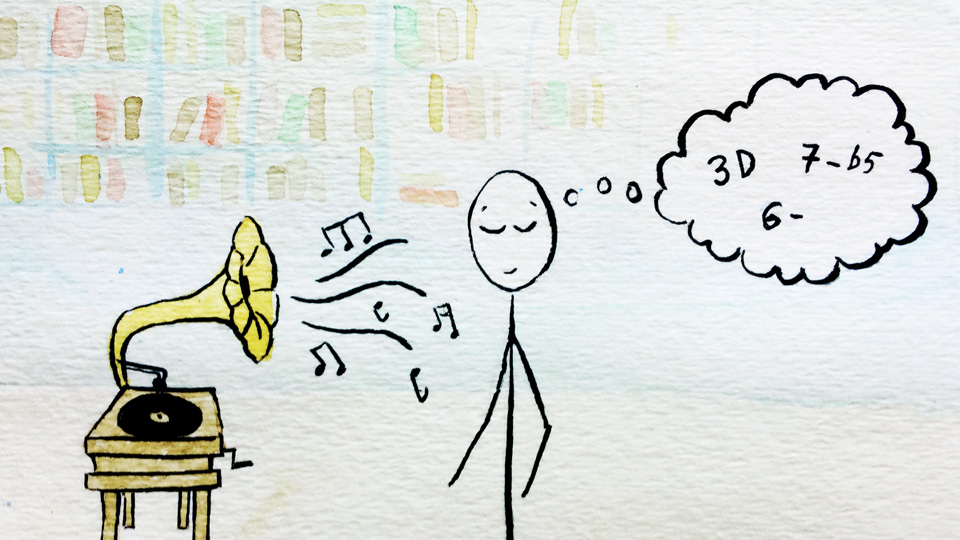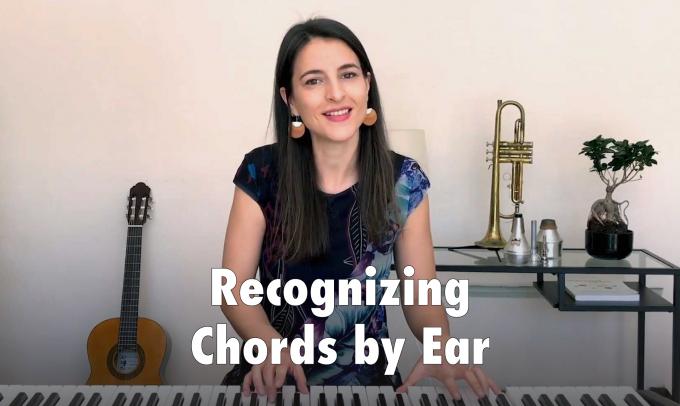Hi David,
I've been experimenting with your method for improvising for a few months now and it's really starting to click. I was improvising over a progression today, and I eventually figured out that it had the following chords:
| E | G#7 | C#m | F# | B | A |
I found that I had to listen to the progression between 5-10 times before I could recognize the chords. Is this normal? Does it just come down to practice, or should I be able to do this instantly?
Thanks!
Karl
David's response:
Hi Karl,
If you add each new chord to your repertoire in the right way then you'll be able to recognize them instantly. What's deceptive is that the chord symbols you mentioned (E, G#7, C#m, etc.) are not actually what we're recognizing. What we recognize is the harmonic function of each chord. This is how our ear works naturally, and it's why everyone in the audience is able to enjoy these chords in the first place. So the first thing you need to do is change your vocabulary and start doing all your thinking in tonal numbers like we do in IFR.
When you begin thinking in tonal numbers, you can immediately recognize that all of the chords you mentioned are among the most common chords in popular music. These are chords that every IFR student learns to recognize by ear. We call these chords 1, 3D, 6-, 2D, 5D, 4. Notice that every single one of these chords is built on one of the seven notes of the major scale. This is how we're able to recognize chords by ear.
So just by practicing the IFR method, you will definitely learn to recognize chord progressions like this one by ear. And if you want to greatly accelerate this ability, I recommend our very popular video course Recognizing Chords by Ear.
In this workshop, you’ll learn how to study chords in a way that makes recognizing them by ear a natural part of your ability. You’ll learn to recognize both the overall sensation of each chord (which comes from its harmonic function), and also the inner workings of the notes (revealed by the melodies that you can hear in the chords themselves). You’ll also get to experiment with these chords yourself, harmonizing melodies with different chords so that you can feel their effects for yourself. And of course there will also be lots of jamming and creative improvising, all focused on helping you become deeply familiar with the chords so you know exactly what to listen for to recognize them by ear.
Another key to recognizing chords by ear is to know where to start. In this workshop, we’re going to develop this skill using the four most important chords in all popular music (these are chords 1, 4, 5D and 6-). So another benefit of the course is that you’ll have these four chords already mastered. And almost every song in the world uses one or more of these chords. Notice that all four of these chords appear in the song you mentioned! As you can see, by mastering these four chords first, you’ll always have many points in any song where you know exactly what the chord is. This gives you a tremendous reference point for recognizing everything else in the song as well.
So if recognizing chords by ear is important to you, my advice is to first learn the skill itself and understand how you can study any new chord in a way that gives you this ability automatically. Then you can take this new focus with you as you progress through your IFR journey. All of the chords you mentioned are part of the IFR learning path. In fact, every one of these chords is covered in IFR Jam Tracks Level 4: Mixed Harmony Essentials. Once you know the skill of recognizing chords by ear, and you know how to study chords in a way that makes recognizing them by ear a natural part of your music ability, you'll have this ability automatically for every new chord that you study.
David

